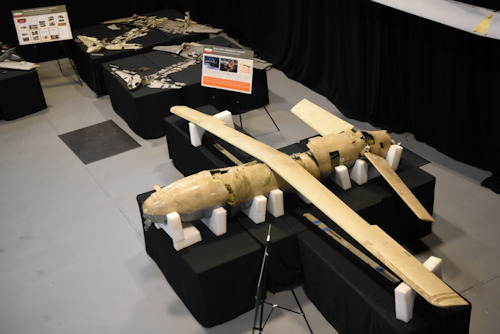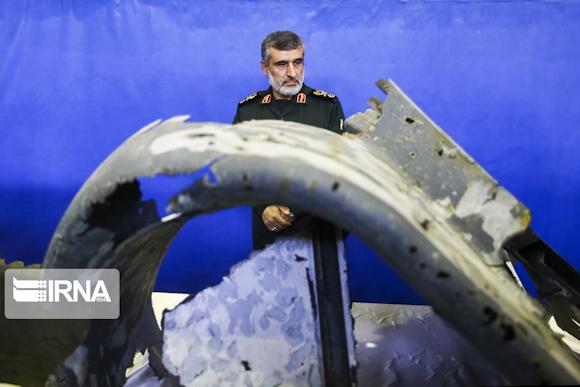Over the past few months, the Persian Gulf has rapidly turned into a new "hot spot" of the already incandescent Middle East. The 12 last May, an alleged act of sabotage targeted the oil tanker "Amjad" and the tanker "Al Marzoqah" (both owned by the Saudi shipping company Bahri). The tanker barge flying the flag of the United Arab Emirates "A Michael" and the Norwegian tanker "MT Andrea Victory" have also been the object of targeted attacks.
All the vessels mentioned above were hit off the Fujairah emirate port even though all sabotage acts were so surgical that they did not cause any casualties or oil spills.
Asked about the incident, Jaber al-Lamki, executive director of the "National Media Council" of the United Arab Emirates said that the attack was "Aimed at undermining both global oil supplies and maritime safety".
From the outset, most media outlets have formulated various hypotheses about the incident by providing sometimes contradictory information from "anonymous sources". The majority of these speculations already then focused on the alleged Iranian involvement in the affair. In fact, the United States immediately deplored the "Iranian behavior", with national security adviser John Bolton claiming that the attacks were the work of "Naval mines almost certainly from Iran". The Director of United General Staff, Admiral Michael Gilday, subsequently issued a statement stating that "The Iranian leadership at the highest level has ordered the completion of a series of disruptive attacks throughout the region".
 In response, Iran denied having ordered or even participated in the attacks, stating that it was "Fabrications of the United States". Iranian foreign minister Javad Zarif (photo) then pointed out that Iran had "Previously expected that such actions would occur in order to create tensions in the region".
In response, Iran denied having ordered or even participated in the attacks, stating that it was "Fabrications of the United States". Iranian foreign minister Javad Zarif (photo) then pointed out that Iran had "Previously expected that such actions would occur in order to create tensions in the region".
The 12 June, a fire broke out on an Iranian oil platform in the South Pars field of the Persian Gulf but the flames were soon tamed and no fatal incidents were reported. Iranian state TV said investigators investigate the cause of the fire, although well-informed sources are already talking about a Saudi-based cyber attack.
The 13 June, another and much more serious accident occurred in the Gulf of Oman when the oil tankers "Front Altair" and "Kokuta Corageous", flying respectively the flag of the Marshall Islands and Panama, were subject to explosions. Various hypotheses and speculations are circulating again, with initial versions that spoke in different degrees of attacks by torpedoes, cruise missiles or naval mines and once again Iran was brought into play.
It is important to note that, even in this case, there were no casualties among the crews of the attacked ships. This element is very important and alone helps us to understand how the hypotheses mentioned above are simply fanciful. Iran has a good submarine fleet (which is in continuous expansion) but, from qualified sources in possession of the writer, no Iranian submarine was in the area at the time of the attack. Furthermore, if the attack had been carried by torpedoes, the results would have been different and much more catastrophic. Iran possesses various types of torpedoes of Soviet / Russian, Chinese and North Korean production, and for several years the Iranian defense industries have made significant investments in the sector, producing some gradually more performing models, such as the Kuse, the Age, the Hoot and Valfajr. However all the torpedoes supplied to the Iranian armed forces have the characteristic of being equipped with warheads too powerful to inflict such limited damage.
The hypothesis of cruise missiles is equally widespread given that any of the weapons in Iran's hands could have split in two and plummeted one of the tankers without major problems.

The normal naval mines, both lying on the seabed and floating on the surface, also cause extensive damage of a different nature than those found. The same Yutaka Katada, president of Kokuta Sangyo, the company to which one of the affected oil tankers belongs has defined the reports on an attack by underwater mines as "fake". During a press conference he specified: "A naval mine does not damage a ship above sea level. We are not sure exactly what happened, but it was something that flew to the ship ". He added that the sailors aboard the "Kokuta Courageous" saw "flying objects" orbiting in the area just before the ship was hit, further proof, he said, that the ship was not damaged by mines but by others " objects "that may have been shot from afar.
On June 14, Washington claimed to have evidence confirming Iranian involvement in the previous day's incident. According to a CENTCOM declaration, in fact: "Iranian forces were identified in the act of removing a probable unexploded magnetic mine from the Kokuta Courageous keel". At the same time, in support of its claims, CENTCOM has published a series of photographs and videos, both in black and white and in color, which show a boat belonging to the Guardian Body of the Islamic Revolution (the Pasdaran) approaching the Kokuta Courageous and remove a vaguely trapezoidal shaped object with rounded edges. Some fragments of the aforementioned videos also show Iranian UCAVs of the type Shahed 129 armed with 4 Sadid-345 precision bombs (a combination already used profitably by Iran in the conflicts of Syria and Iraq) intent on controlling the situation from above.
Obviously, Iran has denied any involvement, defining everything as a provocation and, initially, the American version of the story was received with serious skepticism by the more or less independent media, by the aforementioned owner of the Kokuta Corageous and even some European allies in the United States. The American statements were in fact seen as the logical continuation of what had been defined not long ago "campaign of collective hysteria" concerning the alleged Iranian preparations for attacking American military forces and infrastructure in the Middle East region. Campaign which, moreover, was functional in justifying the increase of American military activities in the Gulf region and the redeployment of important air assets and air defense in local military bases. However, the amount of evidence brought by CENTCOM is impossible to ignore even for the most critical observers and also allows us to understand the "technique" used by the Iranians for their actions.

Iranians are monitoring naval activities in the Persian Gulf, the Strait of Hormuz and the Gulf of Oman using their large fleet of drones (in the photo a US collection of Iranian drones on display at the Anacostia-Bolling base), the radars of land and reconnaissance aerial platforms in service with the various air forces at their disposal. Subsequently, the predetermined objectives would be attacked by naval raid units (probably belonging to the special forces of the gods) Pasdaran) that would use small magnetic mines to be placed on the sides of the ships to cause sufficient damage to stop the vessels but without casualties or permanent structural damage. It remains to be seen, however, how the navy raiders of the Pasdaran to approach the ships without being intercepted, given both the near impossibility of "undermining" a moving ship and penetrating the highly guarded ports of the Gulf countries.
Other provocations have also affected the air forces of the contenders, with the Iranians who have repeatedly tried to shoot down the American drones flying over the area. The first attempt, on June 16, saw the Iranian air defense forces unsuccessfully try to bring down an MQ-9 Reaper in the Gulf of Oman, while the second saw the demolition of an RQ-4A Global Hawk/ MQ-4-C Triton previously hijacked by the EW systems of the Iranian armed forces the June 20 (photo opening).
It is clear to everyone that the situation in the Persian Gulf is warming dangerously and that Iran is signaling to the United States that it is now ready to use even the strength to break "the ring of fire" that the Americans have created around it.
If the sanctions should continue to strangle the Iranian economy, it cannot be ruled out that the situation may really get out of control because the Islamic Republic's government would have no other card to play than nationalism to keep the people united around the defense of country and government.
Photo: IRNA / web / US DoD












